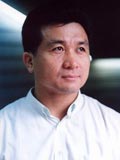Hannah White, violin
Akiko Konishi, piano
(Violin Junior division First Place 12/10/2011)
MP4 file - QuickTime Format
video length 2 min 20 sec
Lutkin Hall, Northwestern University, Evanston, IL USA
Jan 8, 2012
Hannah White, age 11, has been playing the violin five years. Hannah is a second year merit scholarship recipient of the Music Institute of Chicago's Academy program for gifted pre-college musicians where she currently studies with MIC artist faculty member Hye-Sun Lee. As her third year at MYSO,
Hannah is currently in the Senior Symphony, MYSO Chamber Ensembles Program three years, WAYO Orchestra three years, WAYO Chamber Orchestra two years, and Eastbrook Symphony Orchestra. She received a gold award from KMMTA for achieving the highest possible rating three consecutive years. Hannah won the Milwaukee Symphony Bach Double Competition for which she performed with the Milwaukee Symphony Orchestra. Hannah also won the MYSO Concerto Competition and performed with the orchestra. She won the DePaul Concerto Competition where she performed her solo with the Oistrach Symphony Orchestra and was featured on 98.7 WFMT's Introductions Program. She is a two time winner of the the MIC Academy Concerto Competition where she performs her solo with the Academy String Orchestra. She won first place in the Elementary Division of the Sejong Cultural Society's Music Competition. In addition, Hannah has placed in the Society of American Musicians Competition, Frank Stehlik Memorial Scholarship Contest, Lake Country Baroque Competition, Chinese Fine Arts Society Music Competition, and received Honorable Mention at the Madison Youth Concerto Competition.
As featured guest, Hannah was invited two consecutive years to perform for Governors and Delegates at the U.S. - China Chamber of Commerce Annual Gala. Hannah has performed at Milwaukee and Chicago Area businesses, volunteered performing at senior residences, volunteered teaching violin to young children, and performed at churches, weddings, Bar Mitzvahs, and other social engagements.
 Dong-il Sheen was born in Seoul, Korea. He was described as “a quiet revolutionary who broke the barrier of classical music” (Culture and Me magazine 2006). In a 2002 article in the New Music Composition and Critics journal, Professor Young-Han Heo of the Korean National University of Arts wrote, “Dong-il Sheen is a composer who filled the huge void in our lives with a new style of creative music. He explored music style that was ignored by other composers and now firmly established his own style.”
Dong-il Sheen was born in Seoul, Korea. He was described as “a quiet revolutionary who broke the barrier of classical music” (Culture and Me magazine 2006). In a 2002 article in the New Music Composition and Critics journal, Professor Young-Han Heo of the Korean National University of Arts wrote, “Dong-il Sheen is a composer who filled the huge void in our lives with a new style of creative music. He explored music style that was ignored by other composers and now firmly established his own style.”
Mr. Sheen has been active in writing music in many different styles, including western European music, traditional Korean music, children’s music, film soundtracks, and musicals. He graduated Seoul National University and received his Master’s degree at the New York University Graduate School of Music. He collaborated with pianist Jung Hee Han in the album Blue Bicycle, which later received a critical acclaim. He started the new style music movement “Han-ma-dang” and “Music Composers-ma-dang.”
In 2002, Mr. Sheen collaborated with writer-illustrator Jae-soo Liu in the CD-Book Yellow Umbrella, which was named as one of the 10 best illustrated books by the New York Times. Japanese pianist Takako Takahashi made a CD of Mr. Sheen’s music in Japan.
He received numerous awards including the Best Young Artists of the Year award from the Korean Ministry of Culture & Tourism in 2003, and the Grand Prize of the Year in composers and conductors categories from the Korean Broadcasting Service (KBS) in 2004.
Mr. Sheen is a board member of the Association of Korean Musicians, President of the Composer’s Association (Jahk-gok-ma-dang), and Co-president of the Children’s Arts Production. Currently he is a lecturer at the Korean National University of Arts and Seoul National University Graduate School of Music.
Yang-San-Do is a folk song from the Kyunggi Province. It originated during the late Chosun dynasty, sung by construction workers during the renovation of the Kyung Bok Palace in Seoul. Later on this tune was developed into a sun sori (folk song), sung with many variations of the verses. The rhythm of the song is in three beats.
The main melody of this piece is played by violin while the piano plays only the accompaniment. It begins with the unmodified Yang-San-Do tune to introduce the audience to the original song, before the violin melody expands to a new level as it explores the melodic variations of the theme while keeping the general, upbeat feeling of the Yang-San-Do tune
